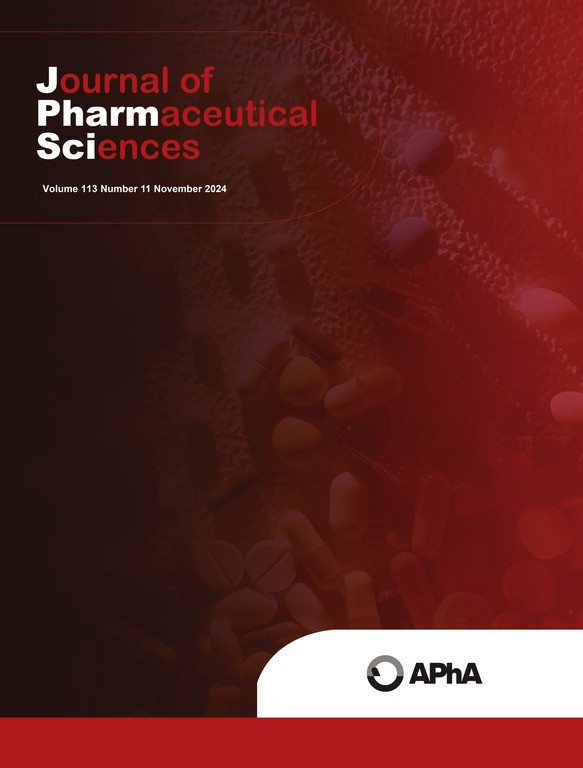Particle formation during peristaltic pumping of therapeutic proteins: Hofmeister anions effect
IF 3.7
3区 医学
Q2 CHEMISTRY, MEDICINAL
引用次数: 0
Abstract
This study reveals specific ion effects on particle formation during peristaltic pumping of a monoclonal Antibody (Antibody A). For this purpose, three anions in the direct Hofmeister series were selected, ranging from the kosmotropic SO42- to the more neutral Cl- and the chaotropic SCN-. Protein particle formation during peristaltic pumping is described primarily as a surface-driven mechanism. Therefore, the effect of the anions was hypothesised to affect the particle formation with the smallest amount of protein adsorbing and the least particles formed in the presence of SCN-, followed by the highest in SO42-. The alternative hypothesis was that most protein particles would be formed in SCN- due to the lower intrinsic stability of Antibody A. On the other hand, if none of the factors dominates the particle formation, it would not necessarily follow the Hofmeister series linearly. This was shown to be the case as significantly more particles were formed in the presence of NaCl, which could be explained by the interplay of the protein's intrinsic, colloidal, and interfacial stability. Antibody A had the highest protein adsorption in NaCl and the lowest colloidal stability compared to Na2SO4 or NaSCN, which led to the highest amount of subvisual particles formed during pumping.
治疗性蛋白蠕动泵送过程中的粒子形成:霍夫迈斯特阴离子效应。
本研究揭示了单克隆抗体(抗体a)蠕动泵送过程中特定离子对粒子形成的影响。为此,我们选择了直接Hofmeister系列中的三个阴离子,从全向性的SO42-到更中性的Cl-和朝向性的SCN-。蠕动泵送过程中蛋白质颗粒的形成主要被描述为表面驱动的机制。因此,我们假设阴离子的作用影响颗粒的形成,其中蛋白质吸附量最小,SCN-存在时颗粒形成最少,其次是SO42-存在时颗粒形成最多。另一种假设是,由于抗体a的内在稳定性较低,大多数蛋白质颗粒将在SCN中形成。另一方面,如果没有任何因素主导颗粒形成,则不一定遵循Hofmeister级数线性。在NaCl的存在下,形成了更多的颗粒,这可以用蛋白质的内在、胶体和界面稳定性的相互作用来解释。与Na2SO4或NaSCN相比,抗体A在NaCl中的蛋白质吸附量最高,胶体稳定性最低,这导致泵送过程中形成的亚视颗粒量最多。
本文章由计算机程序翻译,如有差异,请以英文原文为准。
求助全文
约1分钟内获得全文
求助全文
来源期刊
CiteScore
7.30
自引率
13.20%
发文量
367
审稿时长
33 days
期刊介绍:
The Journal of Pharmaceutical Sciences will publish original research papers, original research notes, invited topical reviews (including Minireviews), and editorial commentary and news. The area of focus shall be concepts in basic pharmaceutical science and such topics as chemical processing of pharmaceuticals, including crystallization, lyophilization, chemical stability of drugs, pharmacokinetics, biopharmaceutics, pharmacodynamics, pro-drug developments, metabolic disposition of bioactive agents, dosage form design, protein-peptide chemistry and biotechnology specifically as these relate to pharmaceutical technology, and targeted drug delivery.

 求助内容:
求助内容: 应助结果提醒方式:
应助结果提醒方式:


